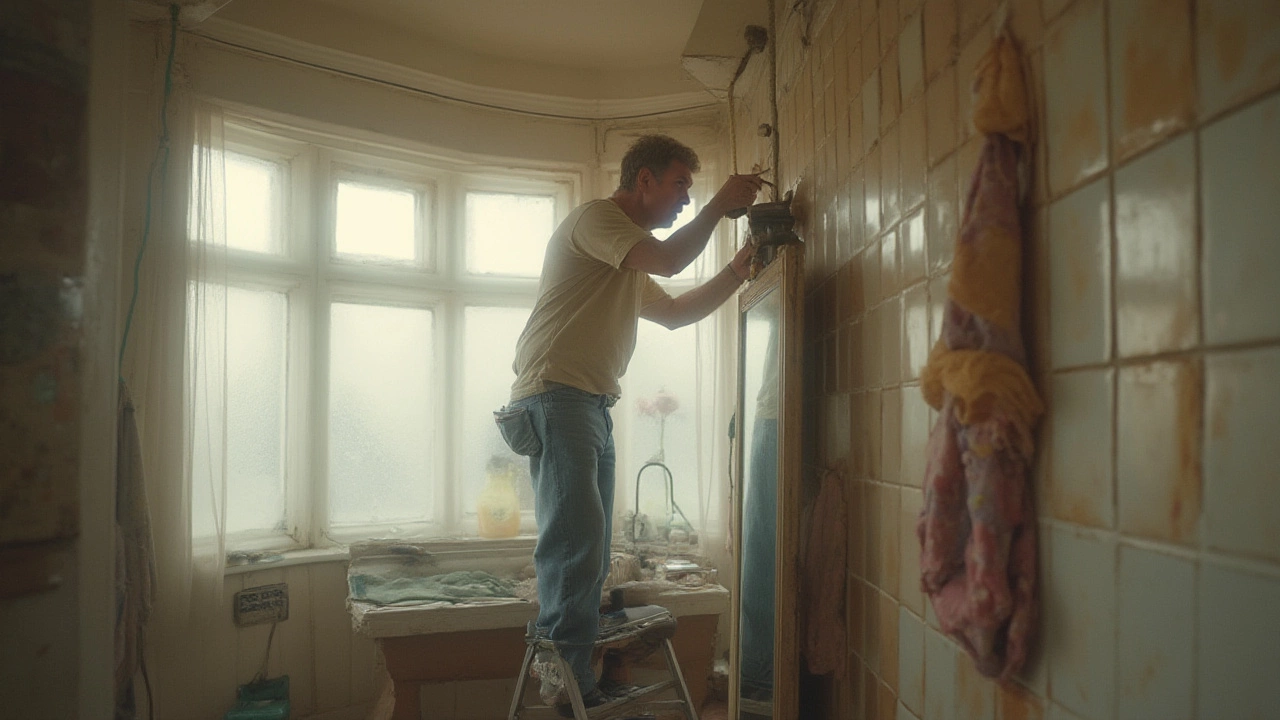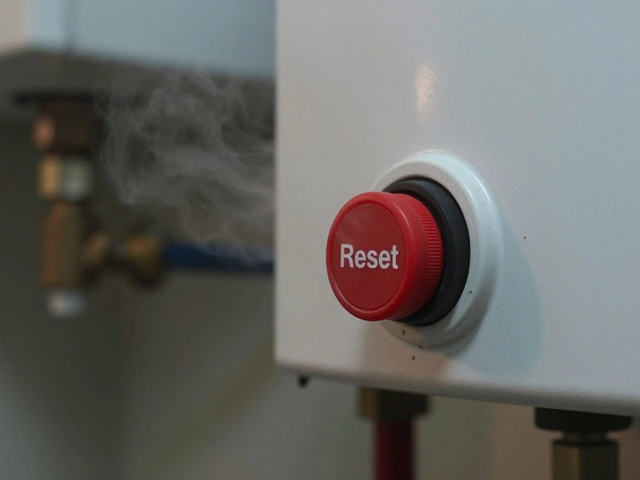So you’re standing in your bathroom, the mirror fogs up every time you shower, and that trusty extractor fan just gave up its ghost with a pitiful whir. Sure, you could ignore it (and embrace a life of mildew), but if you’re like me, you want to know exactly who to call and whether you can tackle it yourself—without getting zapped. Most folks don’t realize how crucial these little fans are. It’s more than just keeping the air fresh; without one, things get dank fast. Let’s dig into what it takes to revive that all-important bathroom extractor fan.
Why a Bathroom Extractor Fan Matters More Than You Think
People often overlook the power of a simple bathroom extractor fan. But step out of the shower on a cool morning and try to see your reflection—if you even find it through the haze. You’ll notice pretty quickly if the fan’s dead. The main job? Yanking out moist air, which helps prevent the kind of condensation that leads to mold, peeling wallpaper, and even warped doors. There’s also the slightly awkward side effect—a fan takes care of smells way better than a scented candle or cracked window. In a 2022 survey by UK Home Ventilation, homeowners with a properly working extractor reported 40% fewer mold issues than those without.
On top of that, UK building regulations now actually demand working extractor fans in bathrooms without a window. And trust me, if you’re renting, your landlord has a legal obligation to keep it running—no more ‘open the window’ excuses. If you own, keeping it functional helps avoid expensive mold remediation down the line. Even fancy insulation and double glazing do nothing to fight off moisture like a good fan.
What a lot of folks don’t realize is how much the type and power of the fan matter. Got a big family? More showers mean more moisture and a hard-working fan. There’s even a spec—litres per second (l/s), often stamped right on the cover. Minimum extraction rates are set by law: 15 l/s for a bathroom extractor. Skimp on that, and your fan won’t keep up, leading to constant fog and a breeding ground for mold and mildew that can even trigger allergies.
Another overlooked detail: extractor fans stop more than just foggy mirrors. Long-term, moisture damages paint, plaster, and can even seep behind tiles, rotting the woodwork. If you ever plan to sell your home, black mold on the ceiling isn’t exactly a good look. That makes fixing—or upgrading—your fan less of a chore and more of an investment in your home’s health.
Who Actually Fixes a Bathroom Extractor Fan?
The short answer: it depends. If you Google “extractor fan repair,” you’ll see electricians pop up first, but there’s actually a bit more nuance. Electricians are trained to handle everything from rewiring to replacing the fan entirely. This is the safe route, especially if your problem involves wiring, strange smells, a tripped fuse, or the fan straight-up doesn’t turn on. Many bathroom extractor fans link into the main lighting circuit, so you don’t want to fiddle unless you know what you’re doing.
There are also specialist extractor fan technicians, though they’re rarer. Some companies focus just on ventilation and air quality. These folks are magicians with ducting, extractor systems, and can spot airflow issues you’d never think of. If you live in a modern house with humidity sensors and timers, or if your fan’s buried in the ceiling with ductwork running halfway across your attic, a ventilation specialist is your best bet.
But what about handymen? In a lot of cases—especially if the fan just needs cleaning or the cover rattles—a skilled handyman can sort minor issues. They usually charge less than electricians, so for “non-wired” jobs (like removing a clog, fixing a noisy grille, or swapping out a plastic cover), this could work. Just make sure the problem doesn’t go deeper.
Here’s a quick way to decide:
- If the fan isn’t working and flipping the bathroom light switch or fuse doesn’t fix it—call an electrician.
- If the fan wheezes, clatters, or barely moves air, but the power works—try a handyman for a cleaning or minor repair.
- If your fan links to whole-house ventilation systems or isn’t a simple wall unit—look for a ventilation specialist.
And then there’s the property manager or landlord route. Renters shouldn’t have to pay. The legal framework in the UK (and most of Europe) makes the landlord responsible for repairs—just report it, and let them send the right pro your way.

Do-It-Yourself (DIY): Should You Try to Fix It Yourself?
If you’re handy with a screwdriver and know how to safely flip off the circuit breaker, some basic fixes are within reach. Just keep in mind: anything more than cleaning or swapping a cover starts to hint at wiring and should probably be left to a pro. But first—always, always turn off the power at the fuse board before touching the fan.
- Clean the cover and grill: Years of dust, lint, and occasionally the odd spider will choke off airflow. Remove the cover (these usually pop off or require unscrewing a couple of fasteners). Wash it with warm soapy water, then vacuum inside the fan housing. Watch as Rex, my terrier, inevitably tries to “help”—never a dull moment.
- Check the fan blades: If it’s stuck or spinning slowly, gunk may be jamming up the works. Carefully twist the blades; if they resist, give them a good clean with a brush and damp cloth. A few drops of light machine oil on the shaft can get things whirring again.
- Inspect for loose wires: Spotting a dangling wire? Tighten the connections—again, only if you know what you’re doing. Never work on live wiring. If unsure, stop and call an expert.
- Test the switch: Sometimes, bathroom light switches have built-in fans, and those switches go bad. Try swapping in a new switch, but only if you’re comfortable replacing electrical parts.
- Replace the whole unit: Many fans cost less than £50 and install into a standard cut-out. Just make sure you match the wiring diagram exactly. But let’s be honest: most of us would rather spend Saturday walking the dog than fiddling with live wires.
Sometimes you do everything right, and the fan still sulks. If it buzzes, smells like burning, or keeps tripping the circuit, you’re better off letting a pro take over. According to the British Electrical and Appliance Repair Association, over 60% of bathroom fan replacements are DIY jobs gone wrong. There’s a good reason for that: soggy hands plus bad wiring equals trouble.
What Will It Cost, and How Long Will a Repair Take?
Money’s always at the back of our minds—especially when appliances break. For extractor fan repair, prices are actually on the mild side compared to, say, a boiler breakdown. Expect a typical electrician’s hourly rate in the UK to run between £40-£70. A straightforward repair (like a stuck impeller or replacing a dead switch) usually takes less than an hour, so it won’t sink your payday.
If you need a full fan replacement, tack on the price of the unit itself—budget fans run from £15 to £50, but if you’ve got a fancy humidity-sensing model, it might be closer to £80 or £100. Don’t forget labor: taking down an old fan and wiring in a new one, especially in an awkward spot, can double the bill if it goes beyond the basics. Got ducting running outside? Replacing external vents costs extra. Most repairs, though, are sorted in under two hours.
Keep in mind: if there’s visible mold damage, plaster repair or repainting can creep in. That’s why catching fan troubles early saves not just repair costs, but the hassle (and stink) of serious moisture problems later. A 2023 study from the UK’s Home Maintenance Trust found that homes with regularly checked extractor fans spent 75% less on related damp problems over five years.
And what about warranties? Many newer extractor fans come with 2- to 5-year guarantees. If your fan’s relatively new, check the paperwork before paying for a fix. You might be able to get a replacement or service for free.
If you’re renting, you shouldn’t pay a penny. Under the Landlord and Tenant Act, extractor fans are covered as part of essential fixtures and appliances. Just be clear (and in writing) when you report the fault. If your landlord stalls, point them to the Housing Health and Safety Rating System rules—they’ll get the message.

Keeping Your Bathroom Extractor Fan in Top Shape
Now that you’ve rescued—or replaced—your bathroom extractor fan, it pays to keep it humming happily. Regular cleaning is honestly the easiest win. Once every couple of months, give the cover, and optionally the visible fan blades, a once-over with a soft brush. If you spot unusual noises, rumbles, or whirring, act fast—a noisy fan often signals a loose part or buildup before a total breakdown. And don’t ignore any burnt smells; motors can fry if they overheat, so shut it off and check right away.
Install a reminder: If you always forget, make it part of a regular cleaning schedule. Or, like I do, stick a cheeky note on the bathroom door to remind yourself. Plus, if your fan connects to ducting, make sure external vents aren’t blocked by leaves, nesting birds, or those stubborn cobwebs (Rex loves to try and “help” here, too).
If your bathroom gets steamy fast and the fan just isn’t keeping up, it might be undersized. Check your fan’s specs—if it pulls less than the required 15 l/s for standard bathrooms, it’s time to upgrade. Modern fans come with smart sensors that only turn on when needed, making them more energy-efficient and whisper-quiet. If yours is so loud you hear it in the next room, you’ll love the newer models.
Some clever tweaks can help even a working fan do a better job. Clearing away clutter around the vent, leaving the door ajar, and running the fan for at least 10–15 minutes after a hot shower helps clear lingering moisture. And don’t forget to check for any new water marks or slow-forming mold on ceilings or walls—early warning signs your fan’s falling behind.
There’s another sneaky place problems can start: older bathrooms often have fans set up with no ducting to the outside, just venting into the loft. This can flood attics with moisture, adding mold problems above your head instead of solving them below. If you spot anything like this, have a pro reroute the vent outside. Building codes are strict on this now, and for good reason.
So the next time your bathroom fogs up or that familiar buzz falls silent, you won’t be stuck wondering who to call or what it’ll cost. A well-cared-for extractor fan isn’t just about clear mirrors and fresh air—it saves you money, headaches, and the endless chase after that mildew smell.




